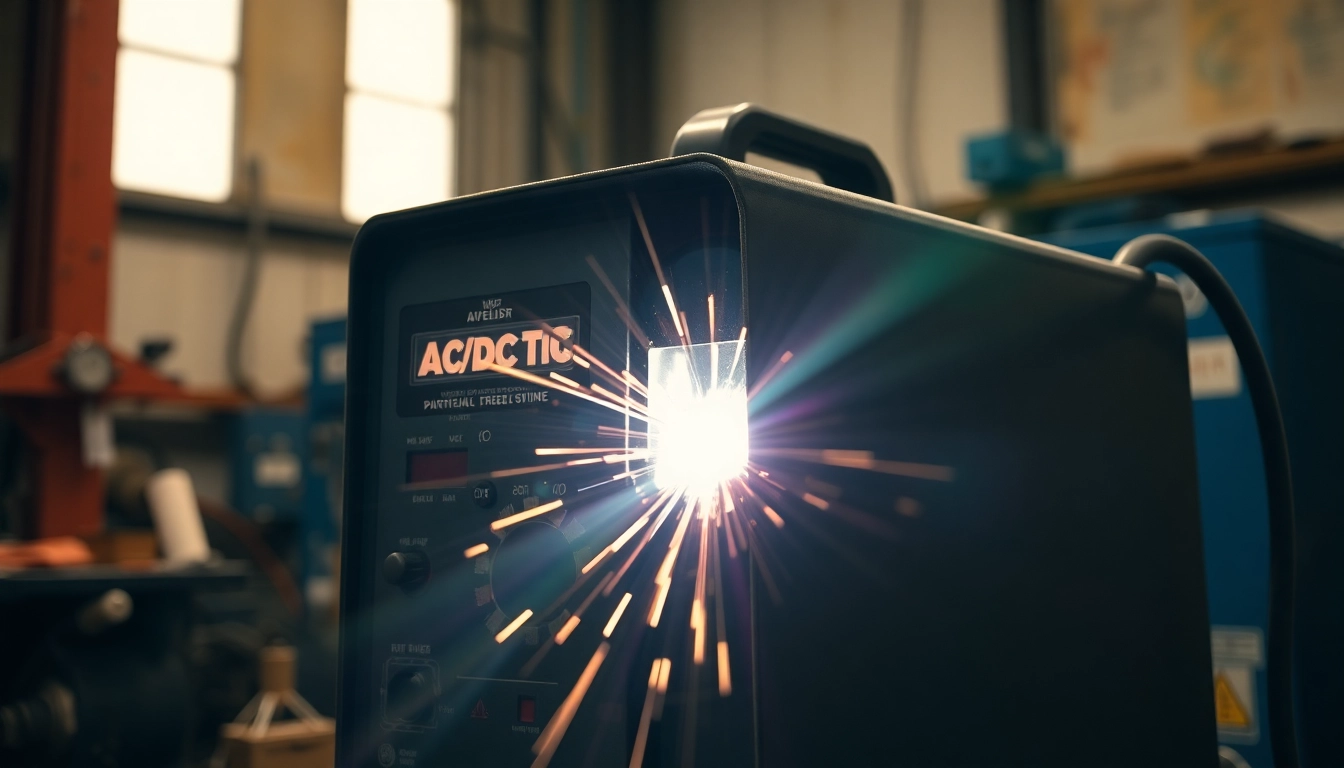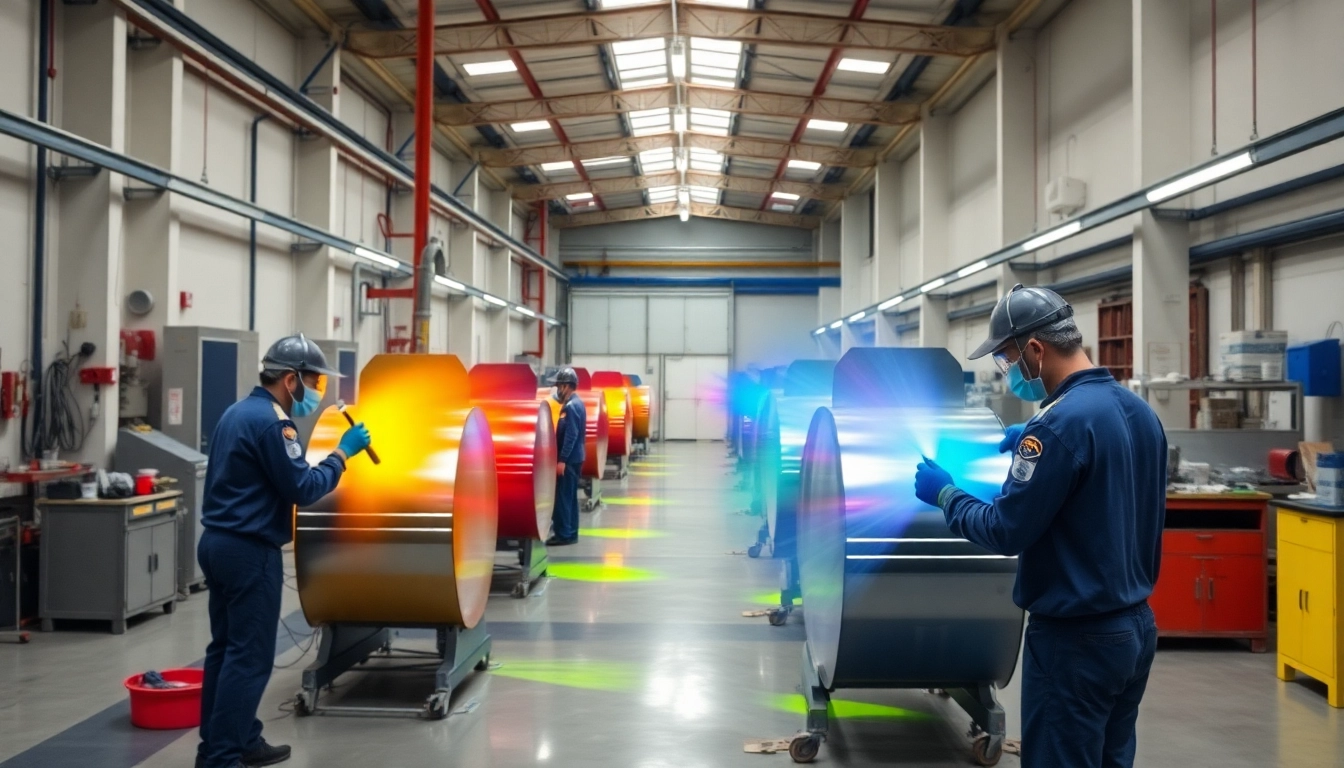Understanding AC DC TIG Welders
What is an AC DC TIG Welder?
An AC DC TIG welder is a specialized welding machine that utilizes Tungsten Inert Gas (TIG) technology to create high-quality welds in various metals. The term “AC/DC” denotes its capability to operate on both alternating current (AC) and direct current (DC), offering unparalleled versatility for different welding applications. AC is primarily used for welding aluminum and magnesium, while DC is suitable for a wider range of metals, including steel, stainless steel, and copper alloys.
Benefits of Using an AC DC TIG Welder
The advantages of using an ac dc tig welder are vast:
- Versatility: It accommodates various metals and thicknesses, making it an essential tool for fabricators and hobbyists alike.
- Precision: Offers excellent control over the weld pool, ensuring clean, aesthetically pleasing welds.
- Clean Finish: Produces minimal spatter and allows for higher quality welds compared to other processes.
- Flexibility: The ability to switch between AC and DC makes it appropriate for diverse projects and materials.
- Portability: Many models are compact and easy to transport, enabling work in various locations.
Common Applications for AC DC TIG Welding
AC DC TIG welders are commonly utilized in a broad spectrum of industries, including:
- Aerospace: Required for welding lightweight and high-strength materials.
- Automotive: Used to fabricate aluminum parts and perform high-quality repairs.
- Manufacturing: Common in the fabrication of stainless steel products and components.
- Artistic Applications: Artists often leverage TIG welding for sculptures and decorative items due to its ability to produce fine detail.
Choosing the Right AC DC TIG Welder
Key Features to Look for in an AC DC TIG Welder
When selecting an AC DC TIG welder, consider these crucial features:
- Amperage Range: Ensure it meets your needs for different materials and thicknesses.
- Pulse Functionality: Offers better control over heat input and helps prevent burn-through on thin materials.
- TIG Torch Quality: Look for models with ergonomic designs and durable materials.
- AC Balance Control: Important for controlling the cleaning action on aluminum.
- Foot Pedal or Hand Control: Allows for greater control over weld intensity during operation.
Comparing Different Brands and Models
The market is saturated with AC DC TIG welder options, including models from renowned brands like Miller Electric, Lincoln Electric, and Everlast. It’s beneficial to compare specifications, performance ratings, and user reviews to determine the best fit for your requirements. Some noteworthy models include:
- Miller Syncrowave Series: Known for durability and advanced technology.
- Lincoln Electric Square Wave: Versatile and praised for its small footprint.
- Everlast PowerTIG: Offers great value for money with extensive features.
Price Ranges: What to Expect
Prices for AC DC TIG welders vary widely, from around $500 for entry-level units to $5000 or more for professional models. Factors influencing price include:
- Brand Reputation: Established brands typically command higher prices.
- Feature Set: More features generally mean a higher price point.
- Build Quality: Machines built for professional use will be more costly than hobby-grade models.
Operating an AC DC TIG Welder
Setup and Preparation Steps
Proper setup is crucial for optimal performance. Follow these steps:
- Inspect and Connect: Ensure all connections are secure and that the welder is in good condition.
- Set Up Gas Flow: Connect the argon gas tank and adjust the flow rate according to the manufacturer’s specifications.
- Select Electrode: Choose the appropriate tungsten electrode size and type based on the material to be welded.
- Adjust Settings: Set the welding current, pulse frequency, and AC balance according to the material and thickness.
Welding Techniques and Best Practices
Mastering welding techniques can vastly improve the quality of your work:
- Stance: Maintain a balanced position to allow for smooth movements.
- Technique: Use a circular motion to help control the heat and fill the weld pool.
- Travel Angle: Maintain a 15-degree angle towards the direction of travel to control the arc length.
- Speed: Adjust your travel speed; slower speeds generally produce deeper penetration.
Safety Considerations When Welding
Safety is paramount. Adhere to these precautions:
- Protective Gear: Always wear appropriate gear including gloves, helmets, and protective clothing.
- Ventilation: Ensure the workspace is adequately ventilated to minimize exposure to harmful fumes.
- Fire Safety: Keep flammable materials away from the welding area and have a fire extinguisher accessible.
- Electrical Safety: Be cautious of electrical hazards; avoid working in wet conditions.
Advanced Techniques with AC DC TIG Welders
Pulsed TIG Welding: An Overview
Pulsed TIG welding is an advanced technique that involves alternating between high and low welding current. This allows for:
- Reduced Heat Input: Helps prevent warping and burn-through on thin materials.
- Improved Control: Results in a more stable arc and cleaner welds.
Welding Different Metals with AC DC TIG
The ability to weld different metals requires understanding their unique properties:
- Aluminum: Requires AC mode for cleaning and better arc stability.
- Stainless Steel: Can be welded using both AC and DC, but DC is often preferred for its heat control.
- Copper Alloys: DC allows for better penetration; ensure to use the right filler material.
Troubleshooting Common Welding Issues
Even experienced welders face challenges. Here are some common issues and solutions:
- Poor Arc Stability: This may indicate incorrect gas flow or tungsten contamination. Inspect and adjust accordingly.
- Inconsistent Weld Width: Check your travel speed and angle; irregular movements can lead to inconsistent welds.
- Excessive Spatter: Adjust the amperage or gas flow; high amperage can generate more spatter.
Maintaining Your AC DC TIG Welder
Routine Maintenance Tasks
Regular maintenance ensures longevity and performance:
- Cleaning: Regularly clean the welder, including the torch, to prevent buildup.
- Inspect Cables: Regularly check for wear and tear to avoid electrical issues.
- Replace Parts: Swap out worn electrodes and nozzles to maintain weld quality.
Signs Your Welder Needs Repair
Paying attention to red flags can save you future headaches:
- Frequent Overheating: Could indicate an issue with the cooling system.
- Arc Problems: Issues with arc stability can suggest faulty electrical components.
- Physical Damage: Any visible damage or wear on the machine needs immediate assessment.
Resources for Professional Servicing
When in doubt, consult with professionals or refer to your manufacturer’s guidelines. Resources may include:
- Official Manufacturer Service Centers: Recommended for specific repair and maintenance services.
- Online Forums and Communities: Engage with fellow welders for tips and shared experiences.
- Local Welding Supply Stores: Often provide services or can direct you to reliable technicians.



